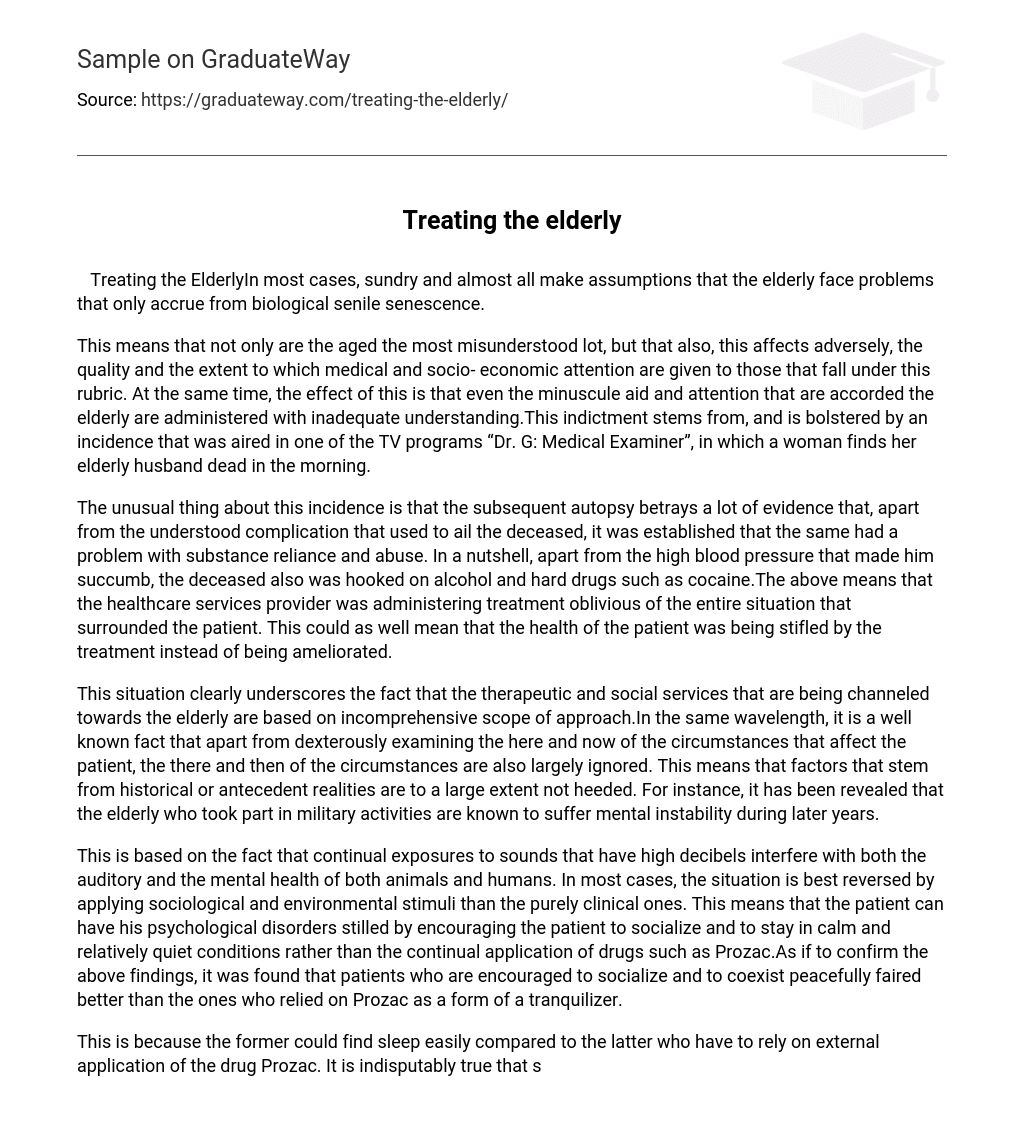Treating the ElderlyIn most cases, sundry and almost all make assumptions that the elderly face problems that only accrue from biological senile senescence.
This means that not only are the aged the most misunderstood lot, but that also, this affects adversely, the quality and the extent to which medical and socio- economic attention are given to those that fall under this rubric. At the same time, the effect of this is that even the minuscule aid and attention that are accorded the elderly are administered with inadequate understanding.This indictment stems from, and is bolstered by an incidence that was aired in one of the TV programs “Dr. G: Medical Examiner”, in which a woman finds her elderly husband dead in the morning.
The unusual thing about this incidence is that the subsequent autopsy betrays a lot of evidence that, apart from the understood complication that used to ail the deceased, it was established that the same had a problem with substance reliance and abuse. In a nutshell, apart from the high blood pressure that made him succumb, the deceased also was hooked on alcohol and hard drugs such as cocaine.The above means that the healthcare services provider was administering treatment oblivious of the entire situation that surrounded the patient. This could as well mean that the health of the patient was being stifled by the treatment instead of being ameliorated.
This situation clearly underscores the fact that the therapeutic and social services that are being channeled towards the elderly are based on incomprehensive scope of approach.In the same wavelength, it is a well known fact that apart from dexterously examining the here and now of the circumstances that affect the patient, the there and then of the circumstances are also largely ignored. This means that factors that stem from historical or antecedent realities are to a large extent not heeded. For instance, it has been revealed that the elderly who took part in military activities are known to suffer mental instability during later years.
This is based on the fact that continual exposures to sounds that have high decibels interfere with both the auditory and the mental health of both animals and humans. In most cases, the situation is best reversed by applying sociological and environmental stimuli than the purely clinical ones. This means that the patient can have his psychological disorders stilled by encouraging the patient to socialize and to stay in calm and relatively quiet conditions rather than the continual application of drugs such as Prozac.As if to confirm the above findings, it was found that patients who are encouraged to socialize and to coexist peacefully faired better than the ones who relied on Prozac as a form of a tranquilizer.
This is because the former could find sleep easily compared to the latter who have to rely on external application of the drug Prozac. It is indisputably true that sleep is therapeutic in itself.Sociologists and psychotherapists such as Sadovoy and Molyn (2004) and media moguls postulate that the emancipation of the society is dependant on the liberalization of information. This is to the effect that it is through the stark but responsible portrayal of the glaring facts that bedevil a society that the same will realize the magnitude of the problem and come up with the best panacea to thereof.
ConclusionIn the above sense, it is the duty of the media to desist from depicting the elderly as flawless. On the contrary, it is recommended that the media give a balanced presentation of the aged as people who have strength coalesced from the numerous years spent on earth, fused with weakness of humanity that make them vulnerable to insidiously destructive acts such as dabbling with drugs. It is through this type of situation that the medical fraternity will see the need to embrace the historical aspect when administering treatment. At the same time, there is need that the relatives of the elderly patient be involved in the treatment programs, for it is through this courtesy that adequate details concerning the patients can be gathered.
ReferenceSadovoy, J. & Molyn, L. (2004). Physiotherapy & Sociological Approach of Treating the Elderly.
Ann Arbor: University of Michigan.





